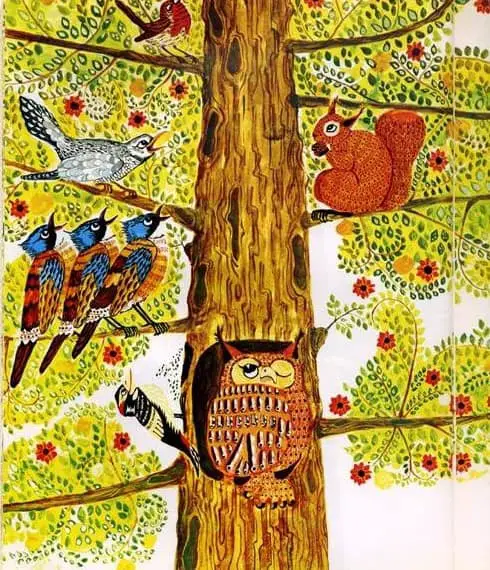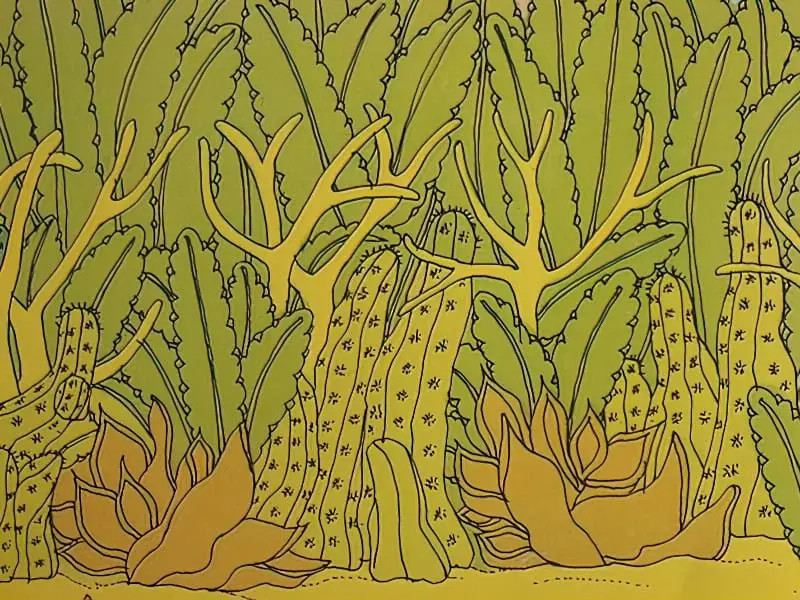Rosie’s Walk is an influential picture book by Pat Hutchins, first published in 1986. This book is notable for its large ironic gap between pictures and text: The text is a pedestrian story in which nothing remarkable happens. The pictures show several near death experiences.
Separately, Rosie’s Walk is designed to teach young readers dimensional prepositions, but this is very much subordinated to the edge-of-your-seat action plot.
Rosie the hen is enjoying a leisurely walk around the farm, but the stroll isn’t nearly as pleasant for the fox who is trying — unsuccessfully — to navigate the obstacle course Rosie is unknowingly leading him through.
MARKETING COPY
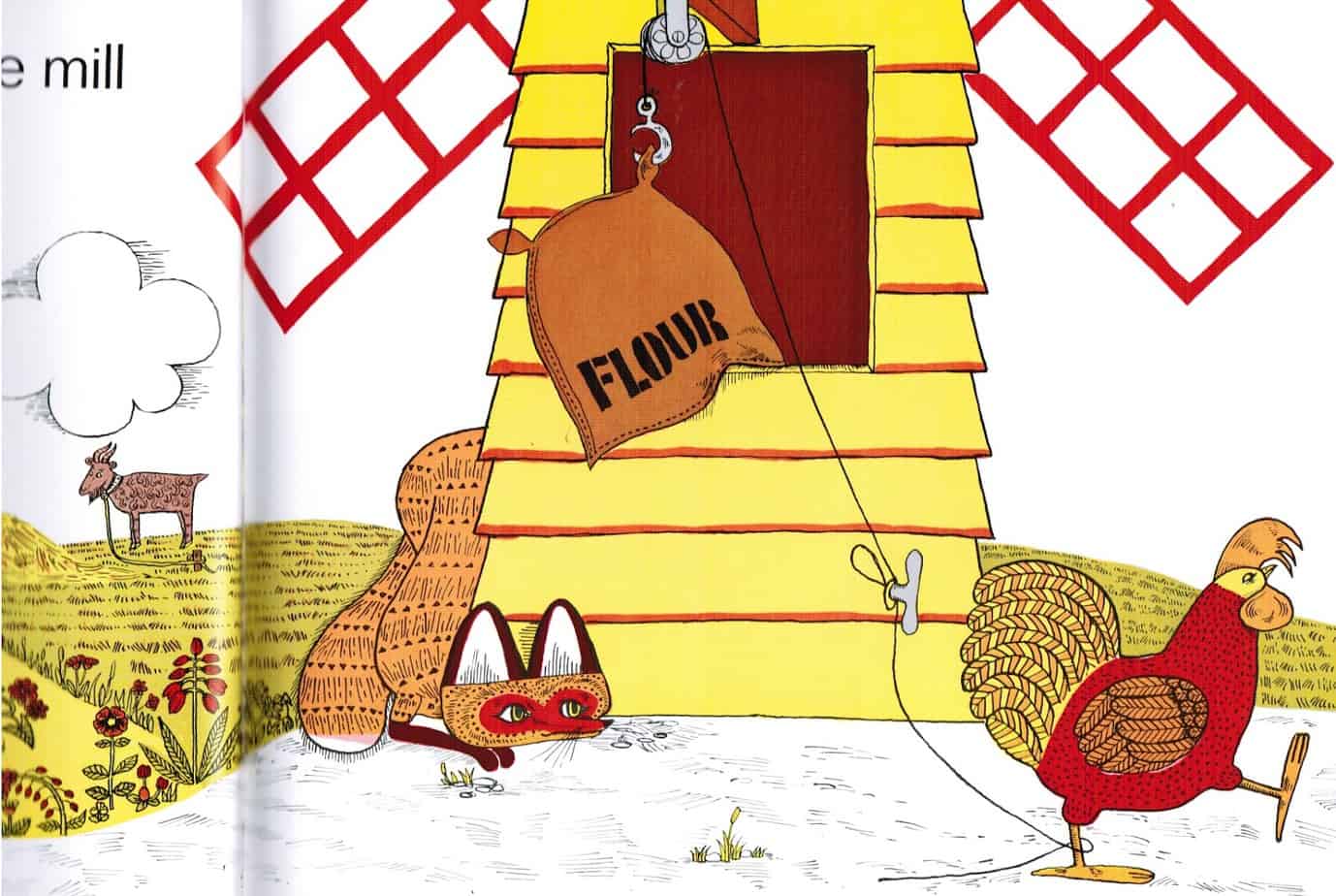
See an animated version of Rosie’s Walk from 1970.
Or if you prefer, an actual chicken walking through an actual obstacle course. Because chickens can be trained, apparently.
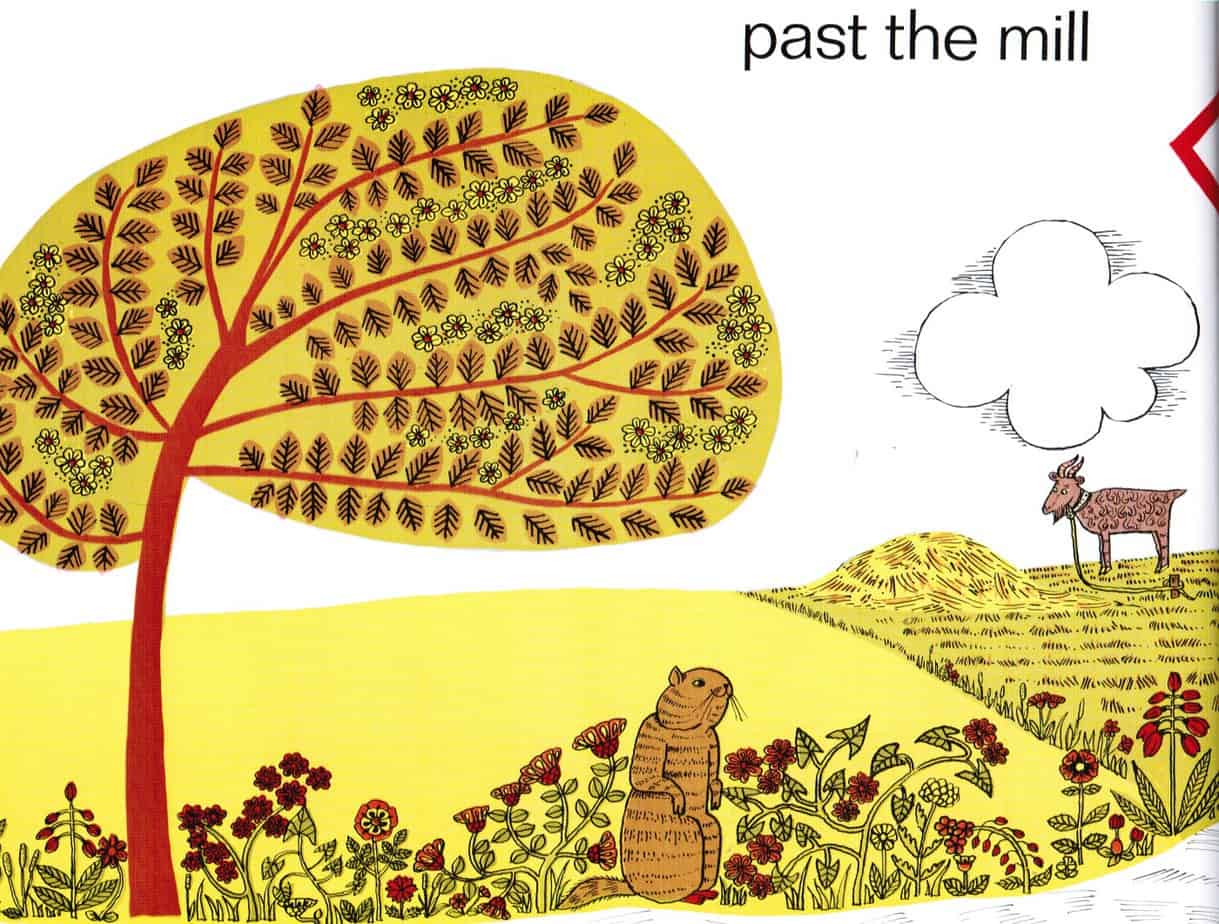
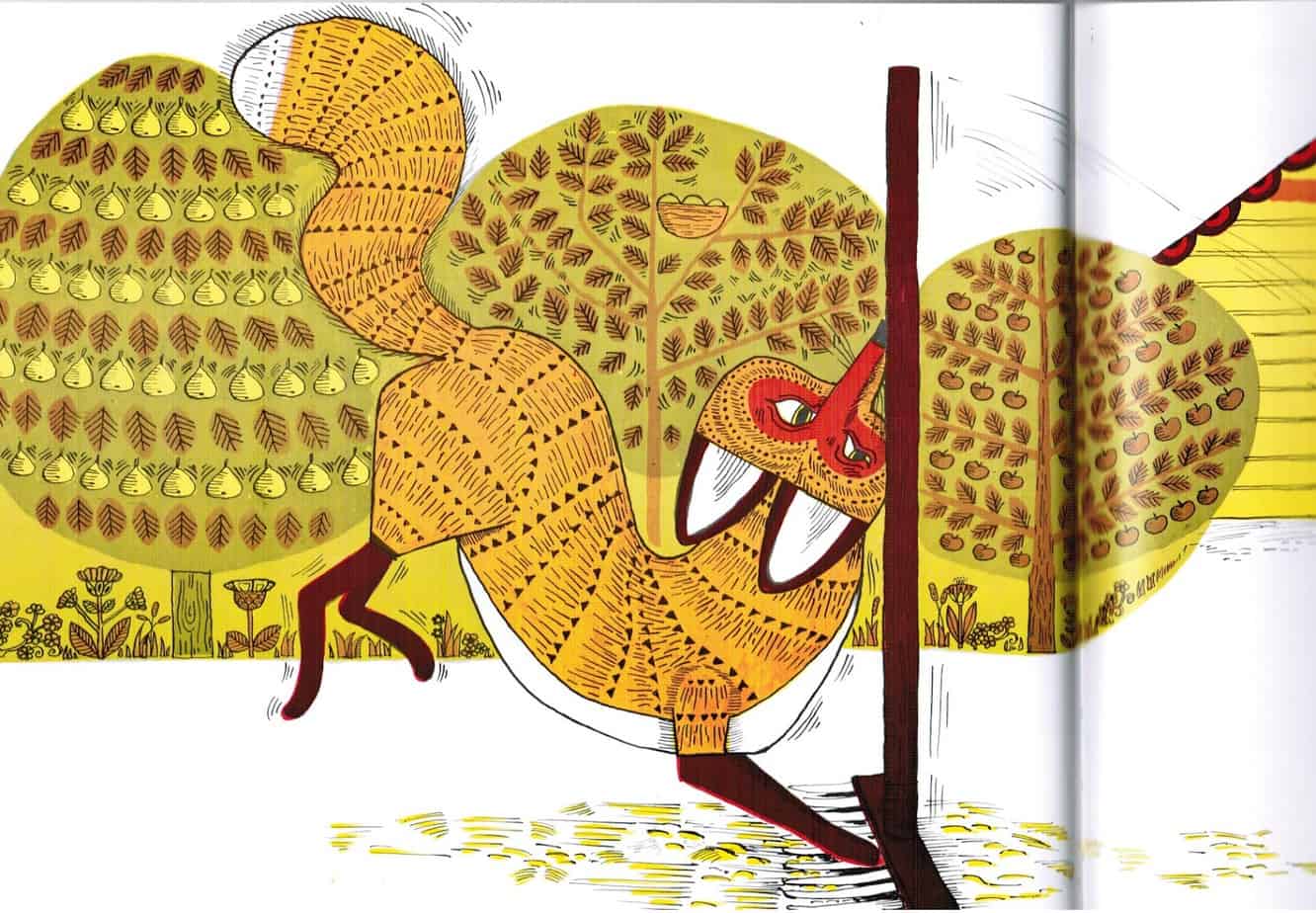
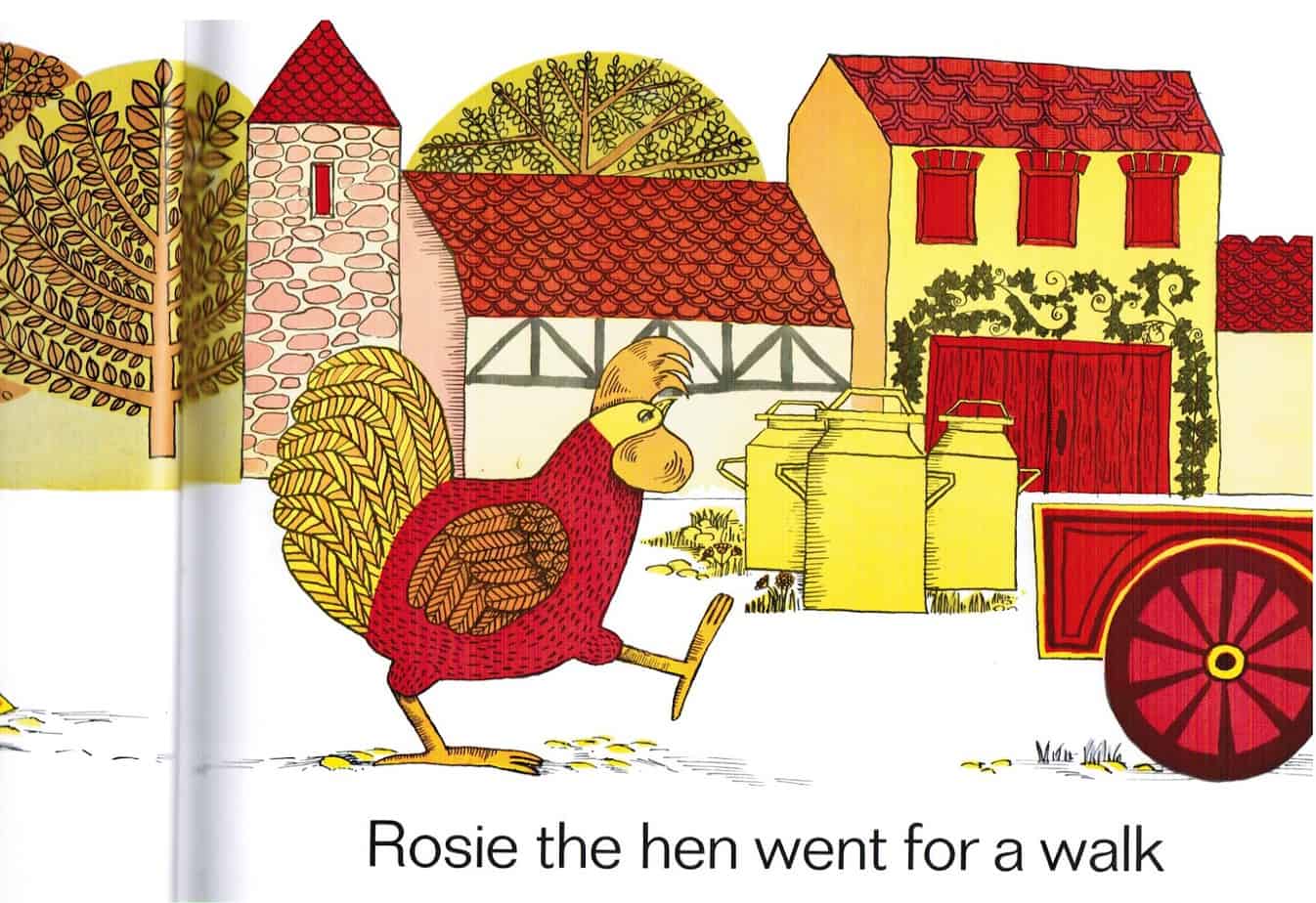
WONDERFULNESS OF ROSIE’S WALK
Here are the two distinct stories in this picturebook:
1. Rosie the hen walks from her coop, across the yard, around the pond, over the haycock, past the mill, through the fence, under the beehives and back to her coop.
2. A very hungry fox plots to murder Rosie the hen but is foiled time after time by getting himself into pickles.
Because this technique has been reproduced a number of times since, it’s easy to forget that Rosie’s Walk started the whole thing off: A pedestrian story (text) is completely offset by illustrations which tell a different story altogether — a story of peril, in which the main character is lucky to get out alive. This picturebook was so influential that it is written about a lot in academic texts on children’s literature, much like Sendak’s Where The Wild Things Are.
For example, here are some passages from Language and Ideology in Children’s Fiction by John Stephens:
An Example Of Irony In Picturebooks
The distance between pictures and words can function as comedy or irony, and this can even be at the expense of the narrator, as seems to be the case with Rosie’s Walk.
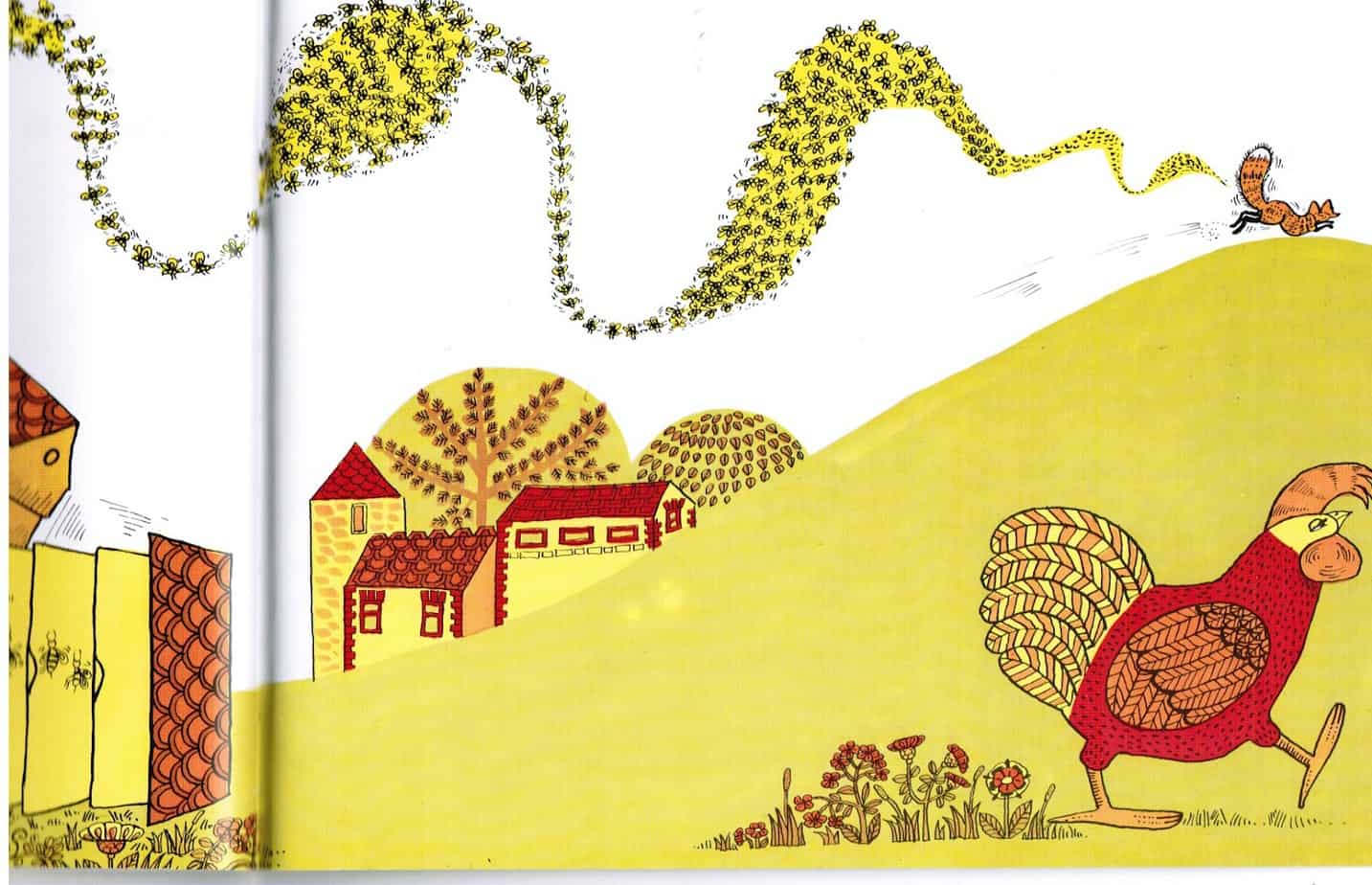
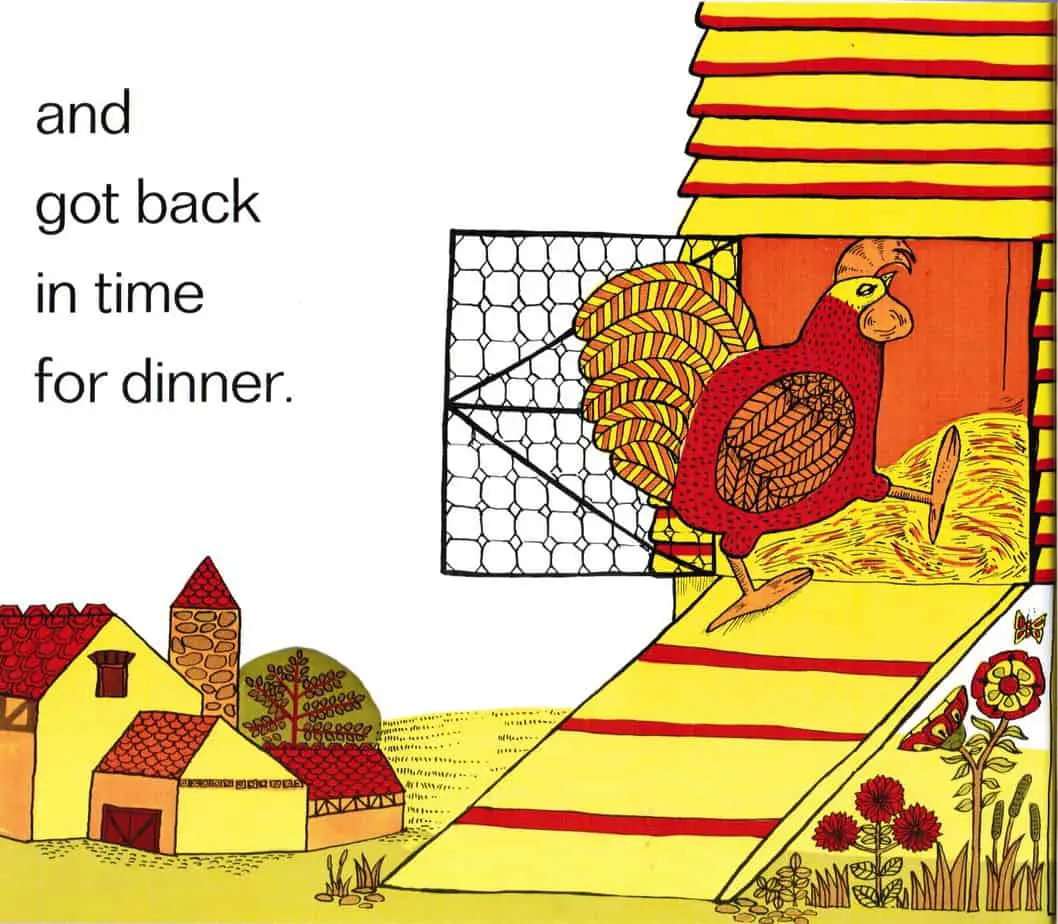
The Layout Of Pages Leads Us Expertly Through The Story
A picture is a frozen moment in time, not subject to the demands of forward motion which control the verbal text. This is obvious from the opening spread of Rosie’s Walk. We can enter the picture at any point, and if we happen to be a young child not yet trained to interpret books from left to right, we might well start anywhere; but in fact the text carefully orients the viewer’s gaze by drawing attention to Rosie and to the information that she is going for a walk.
Rosie is situated slightly off-centre, but her narrative centrality is reinforced because the objects at the edges of the picture (buildings, cart, fox) are incomplete; the picture co-operates with the text in that Rosie is depicted in a stance which conventionally denotes ‘walking’, i.e. one foot flat on the ground (heel and toe), one up-lifted.
The picture is a very flat profile; while there are minimal attempts at perspective in the drawing of the buildings, the milk cans and the cart are ‘flat’, with no attempt to suggest three-dimensionality. The scene is also presented at the same ‘height’ as the viewer, who is positioned full frontal to it. This encourages the viewer to seek the linearity implied by ‘a walk’ — where is Rosie going? Where has she come from?
The important addition in the illustration, which will prove to function in counterpoint with the text, is the presence of the fox. Throughout the book the fox makes a series of bumbled attempts to catch the hen, but these are registered neither by the hen nor the narrating text. Thus on the next double page the fox pounces; the text merely states that Rosie walked across the yard, but the picture shows both the pouncing and the setting up of the old slap-stick gag about treading on the head of a rake, and on the next page again, which is wordless, we see the fox discomfited. The audience’s encounter with the book is thus again very complex.
First, the book introduces its audience to an important principle of intelligent picture books, a capacity to construct and exploit a contradiction between text and picture so that the two complement one another and together produce a story and a significance that depend on their differences from each other.
Further, because individual pictures do not have grammar, syntax or linear flow, but freeze specific moments in time, rarely presenting more than one event within a single frame, this relationship between text and picture is one between differently constructed discourses giving different kinds of information, if not different messages. Hence the audience will experience a complicated process of decoding, so that a text which by itself is a series of inconsequential events structured as a language lesson, and as such might be expected to strive for clarity and precise, single meaning, becomes only a surface beneath which other kinds of meaning can be perceived, and meaningfulness itself becomes problematic.
At the same time, the audience is being offered three different ways of relating to the book: [they] may be a superior subject, a cooperative subject, or a subjected subject, depending on the answer to the following questions. Is the narrating voice as oblivious as Rosie to the fox’s presence? Is the narrator in collusion with the audience, sharing a joke about the story? Or is the narrator teasing the audience?
Children’s Fiction by John Stephens
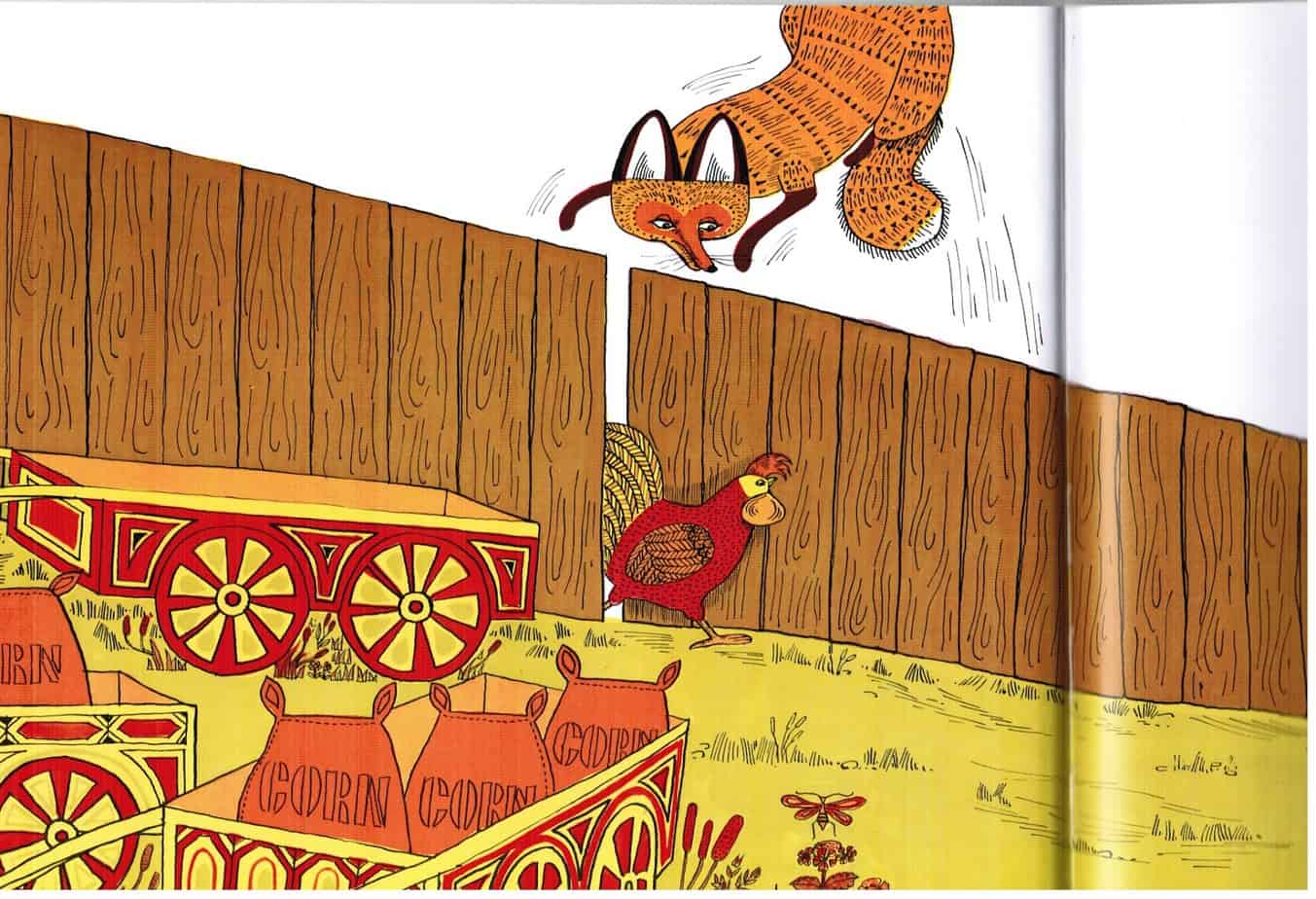
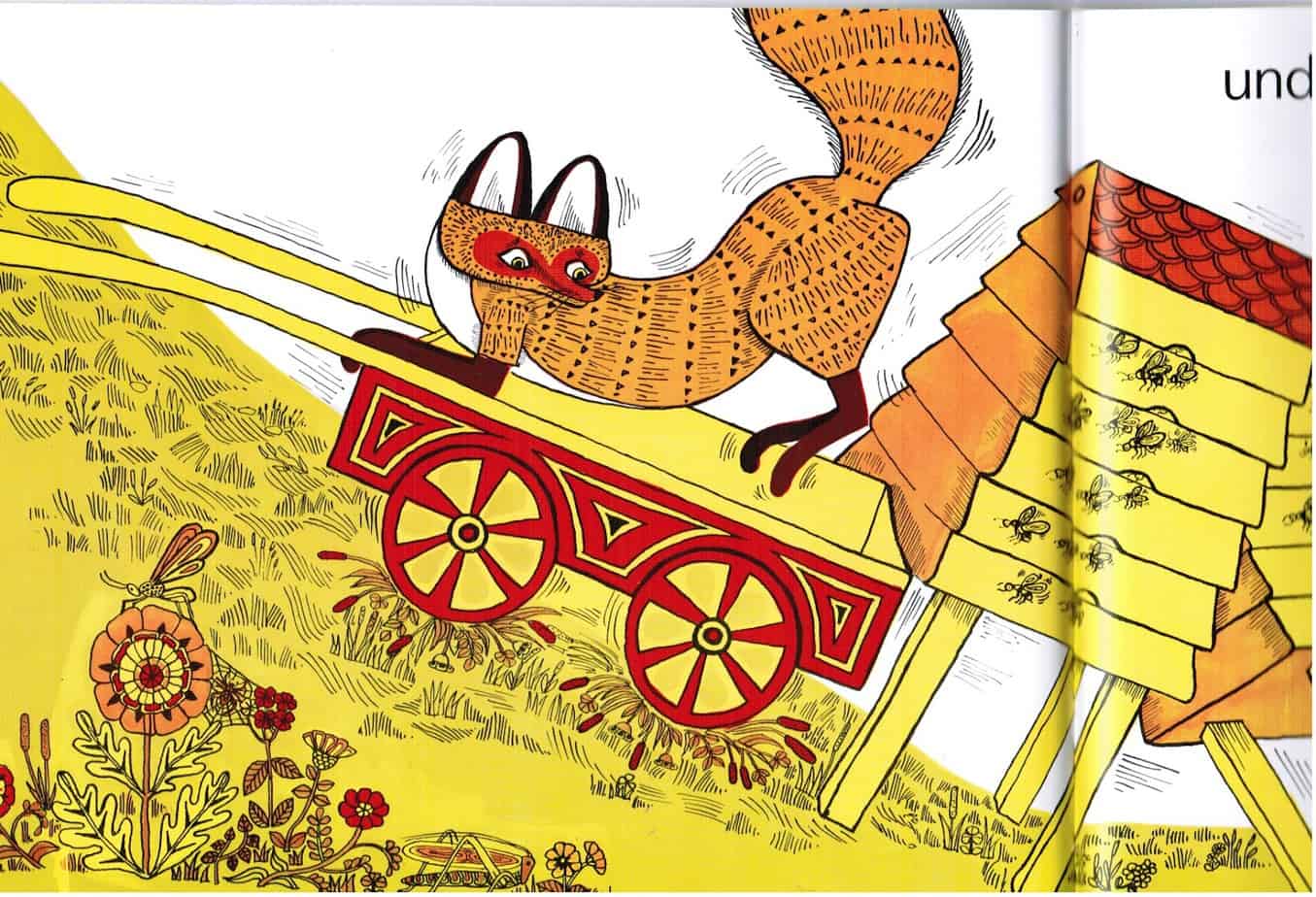
Rosie’s Walk Teaches Humour
What, finally, does Rosie’s Walk tell us about the world? One of its functions is to teach/reinforce a social concept of humour. Treading on rakes, being covered in flour, being caught in runaway vehicles, or being chased by bees are not intrinsically funny events. It is a learned social convention that such events can be regarded as funny, and we learn the situations in which this applies. The ironical counterpoint of text and pictures constitutes these events as comic, even if the audience has not yet learned to recognise them as such.
More specifically, comic villains may readily suffer such mishaps. It renders them less threatening, but also, especially when such accidents occur within a narrative sequence and are linked in a cause-and-effect relationship to attempted acts of villainy, as in Rosie’s Walk, it implies that evil brings about its own undoing.
This is a tenet that has become deeply ingrained in children’s literature, especially in fantasy, and must be seen as an element motivating the recent genre of pessimistic realism. It is already being learned from Rosie’s Walk. Rosie simply passes through her world in quiet self-absorption and unknowingly avoids its major threat. Her escape may seem merely a matter of chance, and she herself may seen incredibly stupid, which offers one way of reading her obliviousness to danger. B
ut nevertheless her implicit passivity may also represent a chosen quietude, and hence an ideological construct crucial for how we think about society and for how we envisage engagement with it or separation from it. Either way, it is an ideological issue that cannot simply be ignored.
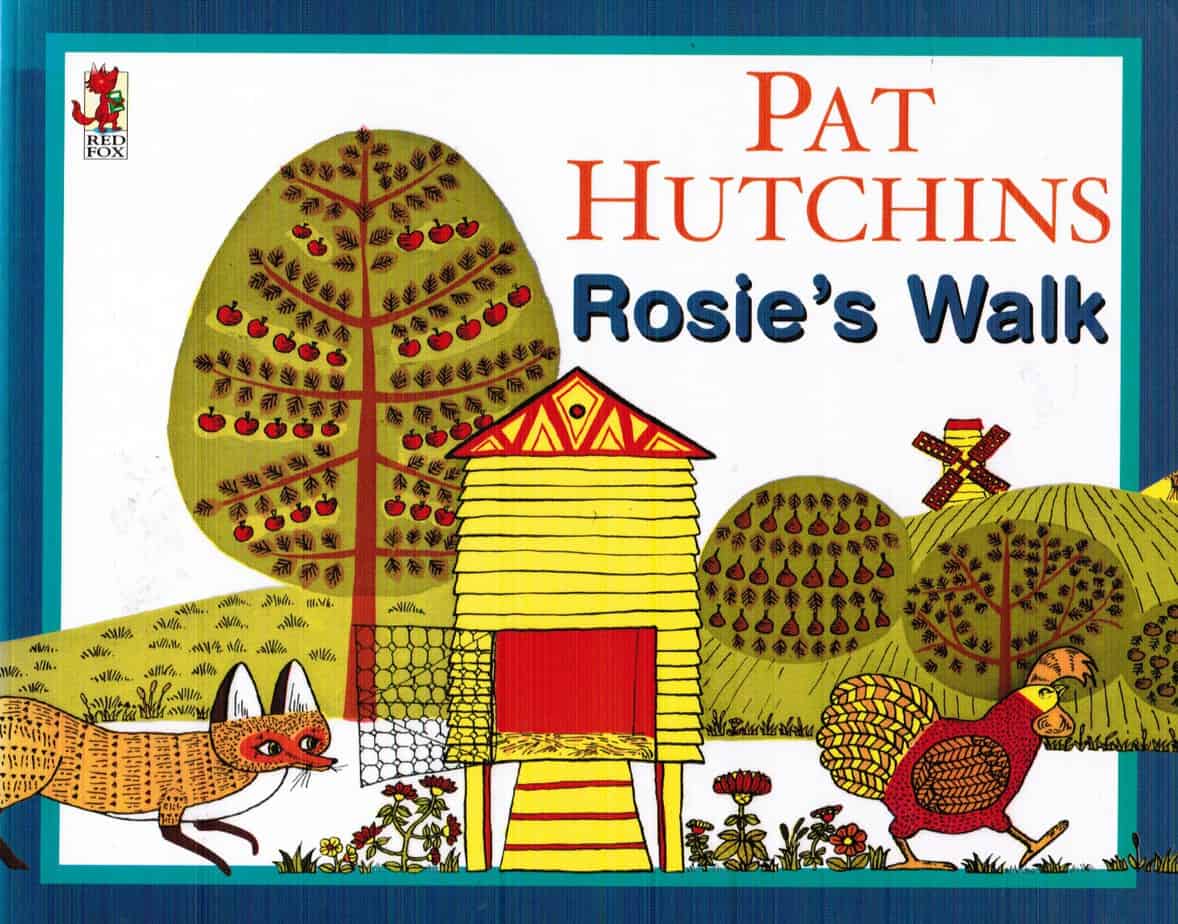
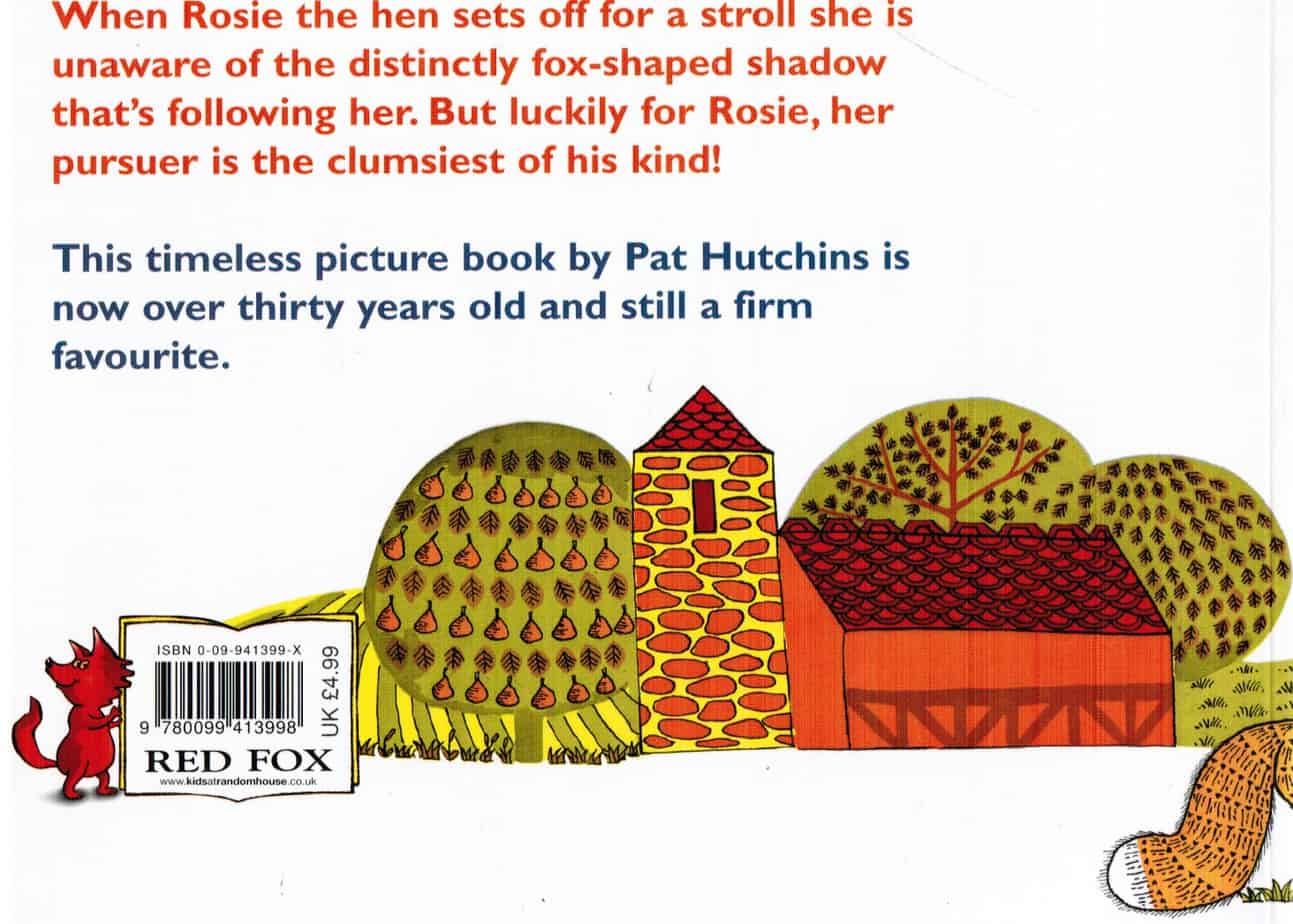
Repeated Patterns Offer Comfort To Offset The Danger
The atmosphere of Rosie’s Walk is clearly not dangerous, despite the threatened violence of the situation, at least partially because so many of the objects it depicts consist of repeated patterns: a pear tree is a round green circle filled with carefully arranged rows of similar pears, and even the fox’s fur consists of the same shapes repeated to form patterns. These images are ritualized, repetitive, and therefore unsurprising, like wallpaper. No true danger could take place in such a comfortably decorative world.
In contrast we have fairy tales which could be genuinely scary to a child if interpreted as existing in the real world, rather than some non-existent other-world. Stories which borrow from fairy tales therefore tend to be more scary than the likes of Rosie’s Walk which, like Beatrix Potter’s Jemima Puddleduck, are about animals who would naturally get eaten, but manage to be completely benign as a story. Sandy Whiskered Gentleman wants to eat Jemima Puddleduck but she is mercifully ignorant of this fact, as Rosie is of the fox.
Children’s Fiction by John Stephens
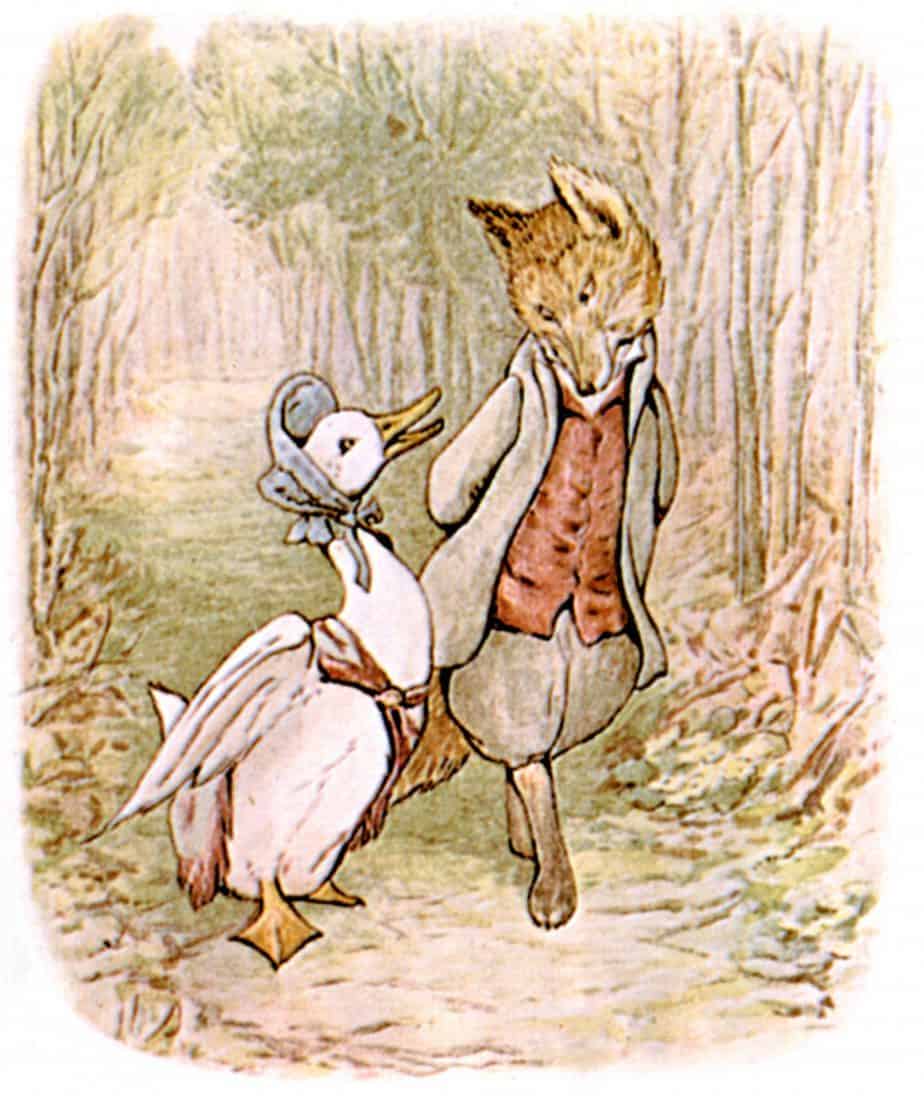
NOTES ON THE ILLUSTRATION
The Illustrations Teach/Reinforce Vocabulary
[Rosie’s Walk] is a very minimal narrative, and at text level is hardly more than the lesson in the use of six dimensional prepositions (‘across’, ‘around’, ‘over’, ‘past’, ‘through’ and ‘under’), which the pictures do indeed illustrate. But because of the way the pictures relate to that simple text, the book becomes a fascinating, exciting and amusing experience. The pictures make it a fuller narrative by laying out a scene around the words, making them both more specific and creating meaningful contexts for them, but they also encourage a more complex response to the text. Pictures can reveal things that the words do not, and their interesting details are clues to a more interesting story than the one the words tell.
John Stephens
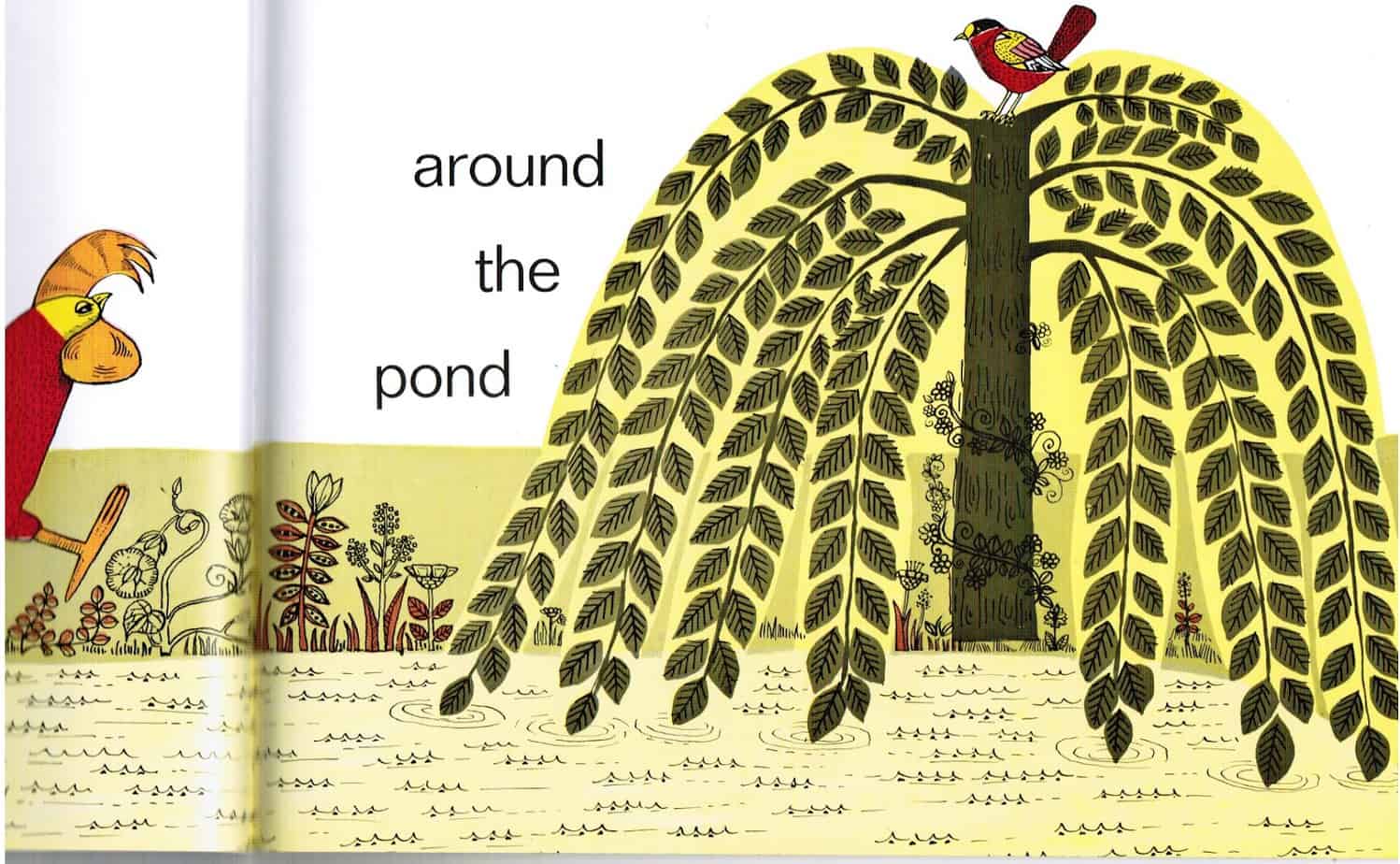
Use of Folk Art
So-called realistic art inevitably implies an attitude of scientific objectivity. We assume that folk art is pleasant and harmless and so respond to the theoretical danger of Rosie’s Walk as pleasant and harmless.
Perry Nodelman, Words About Pictures
Related to this art style is the flat perspective, in contrast with a few picture books (such as those by Chris Van Allsburg) which utilise the full range of available perspectives.
Perspective In Rosie’s Walk
Like the vast majority of picture books, Rosie’s Walk places more emphasis on action than on atmosphere. The lack of detailed perspective suggests that Hutchins’s pictures are meant to be quickly scanned for their narrative information, not inspected for the implications of their settings.
Take note of the line within the pictures — this technique was used a lot in the 1970s, and give the story a distinctly retro feel: This is not just hatching to define form — the lines within the shapes are decorative.
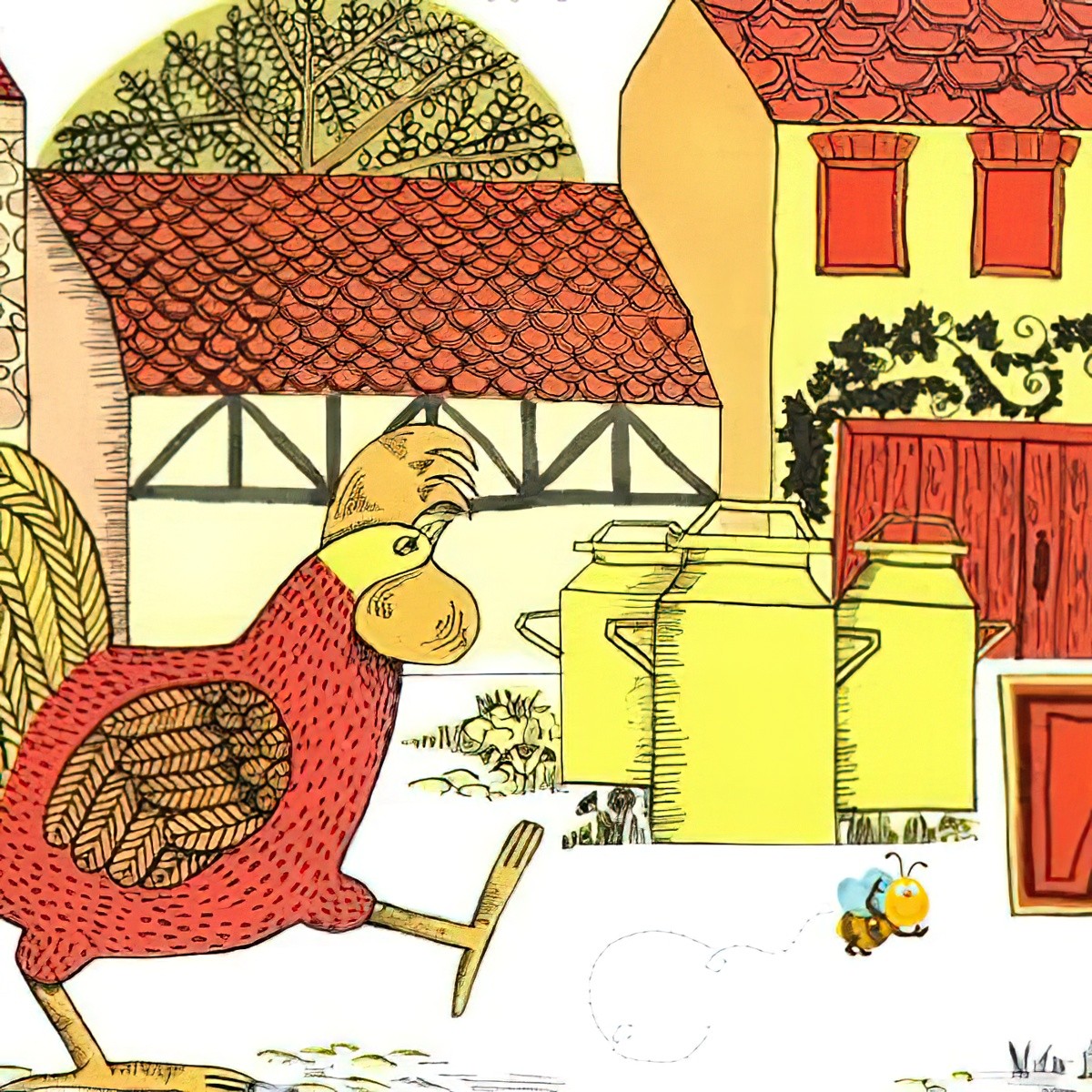
Notice how each tile of the roof is clearly defined and individually drawn. Cylindrical form is given to the milk pails by horizontal, well-defined lines. Rosie’s feathers are ornamental. To off-set all of this ornamentation, it was a good choice to make use of white space for the ground and sky — a popular choice in similar styles of work. (See Mercer Mayer’s early work. Later he seems to have either grown tired of the ornamental style or discarded it when switching to digital, as his ornamental line turns into air-brushed fills which have more obviously been digitally rendered.) Perry Nodelman points out the paradox that both intensely patterned and intensely disrupted visual surfaces convey relatively less narrative information, and that a book such as Rosie’s Walk verges on the merely decorative.
Distinctive Colour Palette

If a picture in which one color predominates strongly suggests a particular mood, then so does a picture that leaves out one particular color. The pictures in Rosie’s Walk seem so peaceful and unthreatening not just because of their style but also because they contain yellow and red and even green, but no blue at all.
Perry Nodelman, Words About Pictures
Pairing Of Pictures To Create Mood and Movement
Much of the fun of Rosie’s Walk is the fact that the pictures come in pairs. In each pair, the first picture shows the fox about to get himself into physical difficulty, and the second shows the result of the movement forward implied by the first.
First, the fox in midair, about to land on a rake; second, the rake hitting the fox in the face. First, the fox about to leap on Rosie; second, the fox in the pond he has not noticed. In choosing these two particular sorts of moments, Hutchins implies an entire sequence of actions; she has selected those moments that best suggest movement forward or the consequences of previous actions. In focusing on the unexpected results of the fox’s action, furthermore, these pairs of pictures constantly reveal how the fox is as unconscious of his surroundings as is Rosie herself: she may have no eyes for foxes, but foxes appear to have no eyes for rakes and ponds. These pairs of pictures create mood as well as meaning. Their repetitive rhythm gives the story the detached feeling of a series of jokes rather than the evolving intensity of a plot; we can laugh as our familiarity with the pattern develops because we know the story is going to keep going through variations of the same situation rather than moving forward toward a climax.
Perry Nodelman, Words About Pictures
Comedians call this gag set up and payoff. See also: A Taxonomy of Humour In Children’s Stories.
COMPARE WITH
Mr Magoo is a somewhat outdated children’s show, this time about a functionally blind man who walks around his urban environment narrowly avoiding one scrape after another.
Another cartoon from around the same era is Roadrunner — again about a bird and a dog-like creature — Wily Coyote — who runs into one scrape after another in pursuit of roadrunner bird for dinner. In this case, the Roadrunner is fully aware of Wily Coyote’s disasters, and seems to take great delight in them.
An Australian picture book by one of Australia’s most popular author/illustrator pairs is A Particular Cow, written by Mem Fox and illustrated by Terry Denton. Like Rosie’s Walk, this story is made up of (mostly) one long sentence which stretches over multiple pages. The cow is oblivious to the chaos she causes after accidentally walking under a clothesline and ending up with a pair of bloomers on her head. Like Rosie’s Walk, there is a dominant use of yellow.
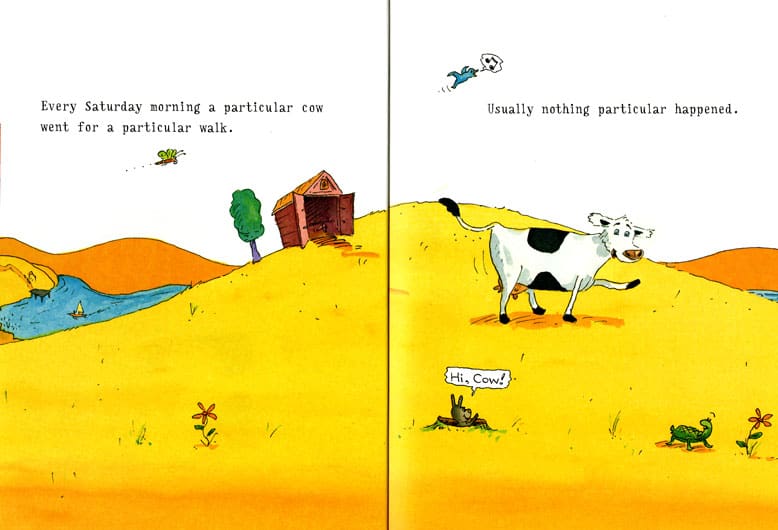
Another picture book with dominant use of yellow is The Story About Ping. Instead of the significant red, we have blue:
Whether or not we associate the absent blue [of Rosie’s Walk] with sadness, these pictures do establish a definite mood, a mood different from the much calmer and more serene mood of Kurt Wiese’s pictures for The Story About Ping, which emphasize blues and yellows and downplay red.
Perry Nodelman, Words About Pictures
Ellen Raskin’s book Nothing Ever Happens On My Block is another story in which the main character is surrounded by plenty of things going on, but fails to notice
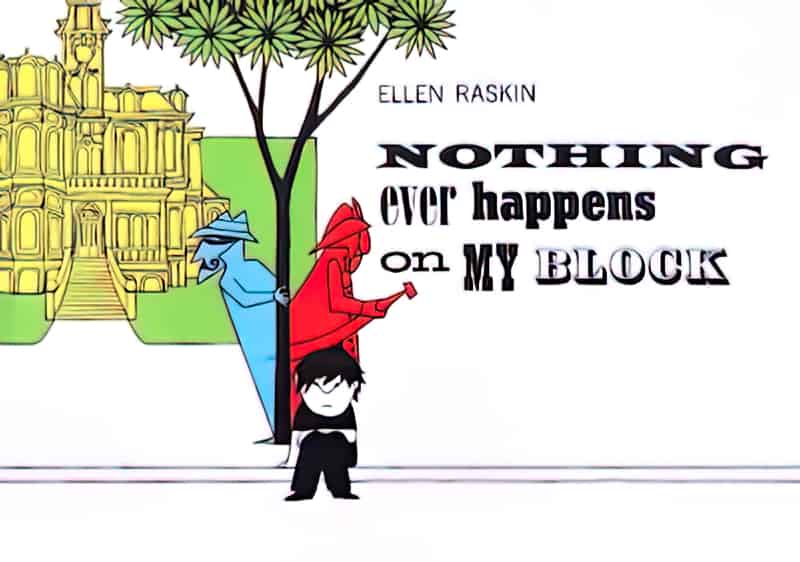
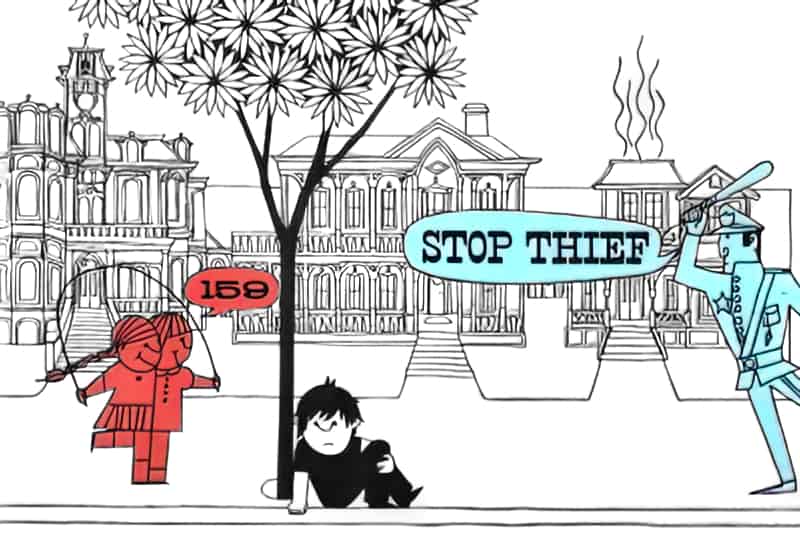
Another story which teaches prepositions but which also has a strong story is by Jan and Stan Berenstain: Bears In The Night.
I’m Mouse is another picture book consisting of a single sentence for a very young audience.
STORY SPECS
Rosie’s Walk, written and illustrated by Pat Hutchins. Published by The Bodley Head, 1968
A single thirty-two word sentence sewn together with seven prepositions. Or, in more academic terminology:
The text is…a single sentence…consisting of two correlative clauses which function formally as the beginning and end of a narrative sequence, as marked by the semantic relationship of the two verbs which frame it, ‘went’ and ‘got back’. The middle of the narrative is made up of a series of prepositional phrases adjuncted to the first clause.
Language and Ideology in Children’s Fiction, John Stephens
WRITE YOUR OWN
Take a classic public domain poem or nursery rhyme and imagine how the narrative might be completely different if you were to change the:
- characters
- time of day
- place
- mood
- colours
Can you turn a workaday tale into a scary one, or vice versa? For example, Mary Had A Little Lamb might not be a lamb at all, but a gigantic fluffy monster. Twinkle Twinkle Little Star would be quite different if a child astronaut were looking at earth from a futuristic space craft. Humpty Dumpty would take on a different mood altogether if ‘Humpty Dumpty’ were a child pushed off a wall by bully classmates.
SEE ALSO
Rosie’s Walk: Picture book perfection from We Read It Like This
